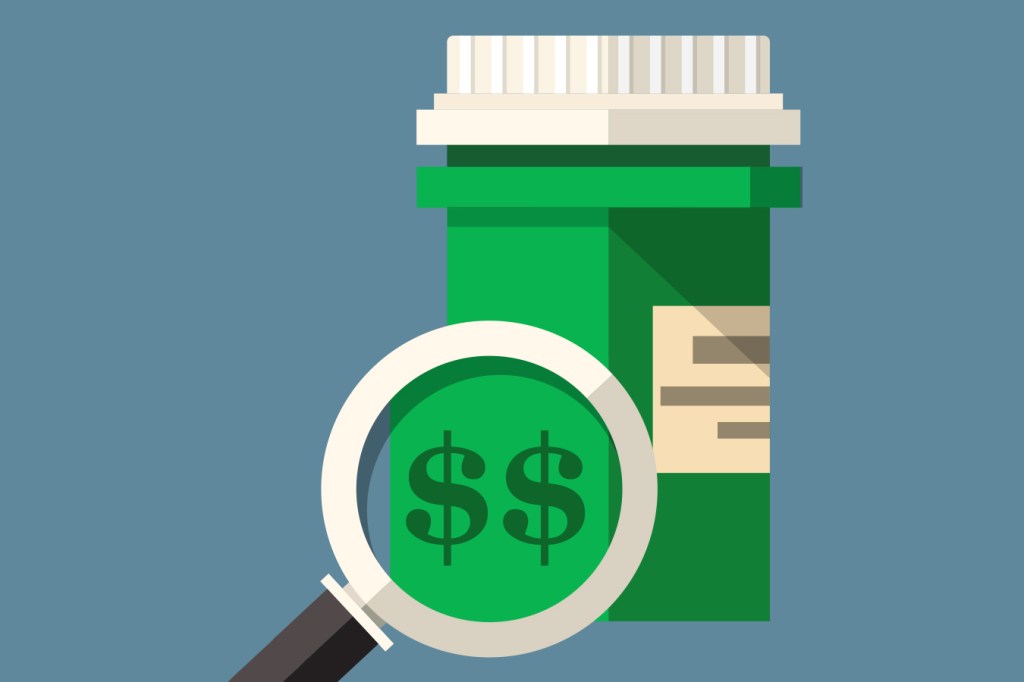Drugmakers fought hard against California’s groundbreaking drug price transparency law, passed in 2017. Now, state health officials have released their first report on the price hikes those drug companies sought to shield.
Pharmaceutical companies raised the “wholesale acquisition cost” of their drugs — the list price for wholesalers without discounts or rebates — by a median of 25.8% from 2017 through the first quarter of 2019, according to the Office of Statewide Health Planning and Development. (The median is a value at the midpoint of data distribution.)
Generic drugs saw the largest median increase of 37.6% during that time. By comparison, the annual inflation rate during the period was 2%.
Several drugs stood out for far heftier price increases: The cost of a generic liquid version of Prozac, for example, rose from $9 to $69 in just the first quarter of 2019, an increase of 667%. Guanfacine, a generic medication for attention deficit hyperactivity disorder (ADHD), on the market since 2010, rose more than 200% in the first quarter of 2019 to $87 for 100 2-milligram pills. Amneal Pharmaceuticals, which makes Guanfacine, cited “manufacturing costs” and “market conditions” as reasons for the price hike.
“Even at a time when there is a microscope on this industry, they’re going ahead with drug price increases for hundreds of drugs well above the rate of inflation,” said Anthony Wright, executive director of the California advocacy group Health Access.
The national debate over exorbitant prescription drug prices — and how to relieve them — was supposed to take center stage in recent weeks, as House Speaker Nancy Pelosi released a plan to negotiate prices for as many as 250 name-brand drugs, including high-priced insulin, for Medicare beneficiaries. Another plan under consideration in the Senate would set a maximum out-of-pocket cost for prescription drugs for Medicare patients and penalize drug companies if prices rose faster than inflation.
President Donald Trump has highlighted drug prices as an issue in his reelection campaign. But lawmakers’ efforts to hammer out legislation are likely to be overshadowed, for now, by presidential impeachment proceedings. In Nevada, health officials in early October fined companies $17 million for failing to comply with the state’s two-year-old transparency law requiring diabetes drug manufacturers to disclose detailed financial and pricing information.
California’s new drug law requires companies to report drug price increases quarterly. Only companies that met certain standards — they raised the price of a drug within the first quarter and the price had risen by at least 16% since January 2017 — had to submit data. The companies that met the standards were required to provide pricing data for the previous five years. In its initial report, the state focused its analysis on drug-pricing trends for about 1,000 products from January 2017 through March 2019.
California’s transparency law also requires drugmakers to state why they are raising prices. Over time, that information, in addition to cost disclosures, could create “one of the more comprehensive and official drug databases on prices that we have nationwide,” Wright said. “That, in itself, is progress, so that we can get better information on the rationale for drug price increases.”
But the data does not reflect discounts and rebates for insurers and pharmacy benefit managers and bears little resemblance to what consumers actually pay, said Priscilla VanderVeer, a spokeswoman for the trade group Pharmaceutical Research and Manufacturers of America. The group filed a lawsuit seeking to overturn the California legislation that has not yet been resolved.
“If transparency legislation only looks at one part of the pharmaceutical supply chain, without getting into the various middlemen like insurers and pharmacy benefit managers that ultimately determine what patients have to pay at the pharmacy counter, it won’t help patients access or afford their medicines,” VanderVeer said in an email.
State Sen. Richard Pan (D-Sacramento), a pediatrician who chairs the Senate health committee, agrees — up to a point.
“Transparency always has value,” Pan said. But policymakers need more data on how much insurers and consumers are spending on prescription drugs, he said.
And he wonders why the price of generic drugs, including those with plenty of competition, rose at higher rates.
His concerns were echoed by University of Southern California policy researchers, who recently published a study that concluded most state-level drug-transparency laws are “insufficient” to reveal the true transaction prices for prescription drugs, or where in the distribution system excessive profits lie.
“The question is, why are these prices going up? Typically, there are competing stories for that,” said Neeraj Sood, vice dean of the University of Southern California’s School of Public Policy and an author of the study. “Maybe cost of production is going up,” he said. “Maybe there’s a drug shortage, or some competitors got eliminated. This reporting of [wholesale acquisition cost] data doesn’t really tell us which of these stories is true.”
For now, California’s new data is not likely to be of much help to consumers, Pan said. But he said it might help state officials in their bid to overhaul the way the state purchases drugs for 13 million people served by Medi-Cal, the state’s Medicaid program for low-income residents. Gov. Gavin Newsom’s controversial plan to have the state, rather than individual Medi-Cal managed-care plans, negotiate directly with drugmakers would save the state an estimated $393 million a year by 2023, according to the administration.
This story was produced by KFF Health News, which publishes California Healthline, an editorially independent service of the California Health Care Foundation.







